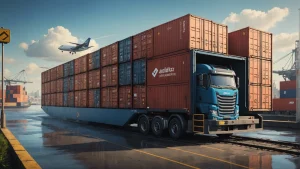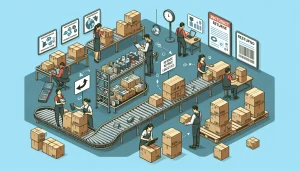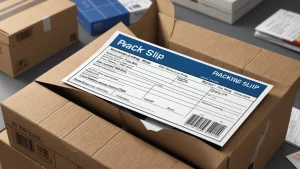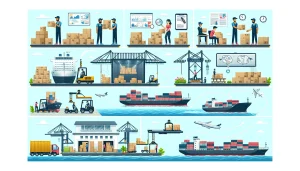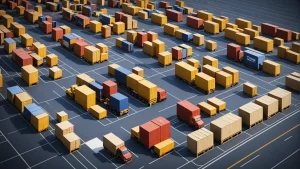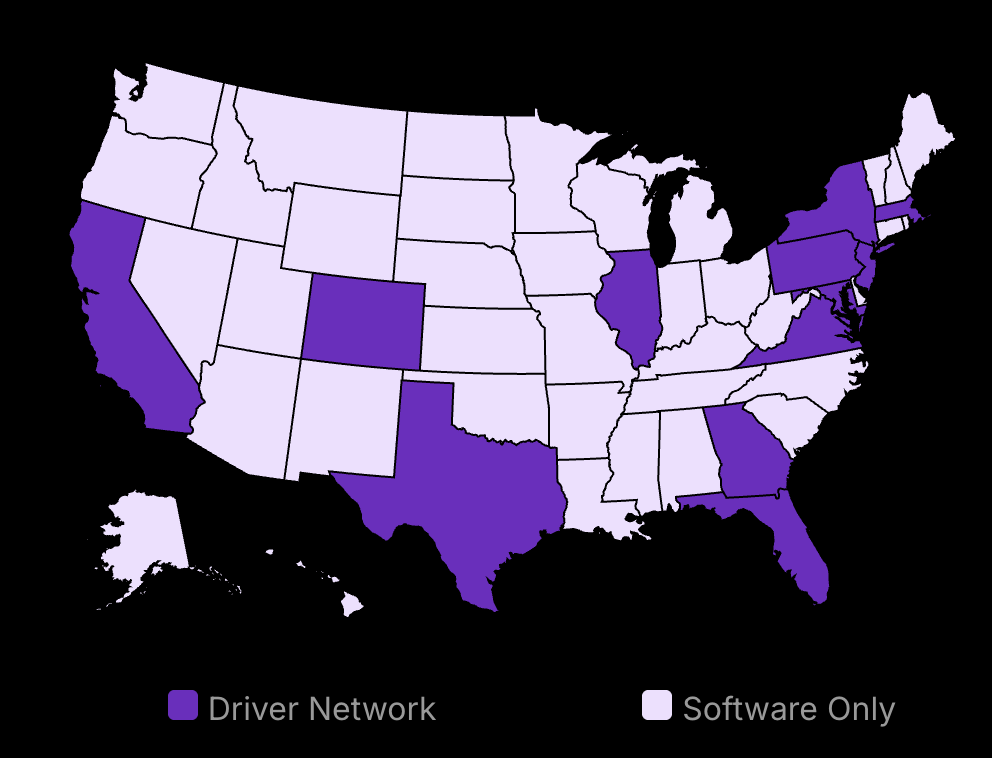Debunking returns and exchanges as mere business hurdles, reverse logistics is your untapped goldmine. This unassuming aspect of your business operations can be a treasure trove of hidden opportunities.
In a world dominated by e-commerce, effective management of returns and exchanges could be your secret weapon.
We’re talking boosts in customer loyalty, efficiency leaps, cost savings, and brand reputation enhancement.
And guess what?
It all hinges on mastering reverse logistics.
Unveiling this hidden world of opportunities for your business starts here. Get ready to dig into brilliant insights that will revolutionize how you perceive and handle returns and exchanges. Remember, your next breakthrough can often come from unexpected places.
Exploring the Value of Reverse Logistics 💼
The global reverse logistics market was valued at $635.6 billion and is projected to reach $958.3 billion by 2028, growing at a CAGR of 5.6%.
Retail Returns: A Comparative Perspective
The retail industry sees a total return rate of 14.5%, highlighting the differential return dynamics between online and physical stores.

Lower your delivery costs by 23%
How we reduce costs:
- No delivery vehicle expenses
- Optimized local routes
- Pay-per-delivery model
- Average 23% delivery cost reduction
Unraveling the Importance of Reverse Logistics in Business
Understanding the Concept of Reverse Logistics
Once upon a time, many organizations perceived the process of returns and exchanges as a necessary evil—a burden that they reluctantly undertook, indeed an unproductive waste of resources. That was until someone turned on the light and revealed the hidden treasures in reverse logistics. Discover how integrating local e-commerce delivery services can revolutionize your returns process, adding value where it was once lost—in this comprehensive guide.
So, what exactly is reverse logistics?
In the simplest terms, reverse logistics refers to the operations related to the return of products from customers, all the way back to the manufacturer. This definition might sound counter-intuitive, as logic would dictate that the product flow should be from the manufacturer to the customer, right? Wrong. Consider this; customers return goods due to defects, or perhaps they simply didn’t like them. Now, rather than that product becoming a loss, reverse logistics steps in to turn a possible loss into a potential profit or cost savings. Delve into the significance of reverse ecommerce logistics and its pivotal role in transforming returns into valuable opportunities for retailers and manufacturers alike.
Let’s delve into how reverse logistics fits into a business’s daily operations.
Reverse logistics plays an often unnoticed, but pivotal role in the operational success of businesses—especially those in retail and manufacturing. Besides being a customer service imperative, efficient reverse logistics systems can be a source of competitive advantage and a lever for cost control. This double-edged advantage is perhaps why ventures are now investing more in reverse logistics than ever before. Discover the impact of reverse e-commerce logistics on operational efficiency and why its strategic management is crucial for business success.
The Broad Scope of Reverse Logistics 🔄
Activities within the global reverse logistics market include warehousing, reselling, recycling management, returns management, replacement management, and ensuring environmental compliance.
The Economic Impact of Reverse Logistics
You’re probably wondering; how can managing returns and exchanges positively impact a firm’s finances.
Imagine a scenario where a product is returned due to defects. If a business has an efficient reverse logistics system in place, it can repair, refurbish, or recycle the product to regain or even increase its value. Therefore, instead of losing money on a faulty product, the business can recoup its investment and even make a profit.
Even more intriguing is the fact that effective reverse logistics can lead to improved customer loyalty. Customers are more likely to patronize businesses that have hassle-free return policies, ultimately boosting overall sales. Now, isn’t that an appealing prospect?
But don’t take just my word for it. Consider this case study.
In 2019, Zappos, the online shoe and clothing retailer, reported that its most profitable customers are those who make the most returns. Strange, isn’t it? But not when you think about how a seamless returns experience can foster customer retention and repeat purchases. An efficient reverse logistics system was instrumental to Zappos’ success story.
The E-Commerce Evolution
The growth rate of e-commerce sales stands at 7.8% compared to the pre-pandemic era, indicating a significant shift in consumer shopping behaviors.
Reverse Logistics Across Industries 🏭
Reverse logistics plays a vital role in industries such as automotive, electronics, pharmaceuticals, enhancing client satisfaction and maximizing value from returns.
Efficient Returns Management: A Key Component of Reverse Logistics in the Supply Chain
The Process of Returns Management in the Reverse Logistics Process
- The process of managing returns plays a pivotal role in customer retention and satisfaction, mirroring the importance of an effective reverse logistics system.
Reverse logistics is far from a simple send-back-and-refund transaction — it’s a layered process needing strategic planning and execution. Let’s walk through a step-by-step guide to managing returns effectively.
- Documentation: Record everything from purchase and delivery details to the reason for return. Accurate documentation aligns your team and keeps your customers informed.
- Inspection: All the returned items must be examined for damage, misuse, or manufacturing defects. This step helps in determining the remedial actions needed.
- Restocking and Disposal: Based on the inspection, decisions are made on whether the product should be restocked, repaired, or discarded. Restocking is cost-effective but only feasible for undamaged products.
- Refunding or Exchange: Upon the product’s status, the customer gets a refund or exchange. Transparency at this stage builds credibility and trust with customers.
Communication in the returns process can’t be overlooked. A transparent and proactive communication strategy reassures customers about the status of their return and prevents misunderstandings that could harm the business-customer relationship. For instance, automated email updates on each stage of the return process keep the customer involved and informed, fostering a more positive customer experience.
The Benefits of Efficient Returns Management
- Efficient returns management not only streamlines operations but also augments customer satisfaction, directly boosting your business reputation.
Each successful return holds the potential to transform a one-time buyer into a loyal customer, contributing significantly to repeat business. Efficient returns management instills confidence in customers about your commitment to their satisfaction, thereby, making them more inclined to choose your business again. This customer loyalty directly translates to a greater lifetime value and a healthy relationship between your business and its customers.
Likewise, the reputation of your business can be greatly impacted by how well you handle returns. Shoppers often check return policies before making a purchase and prefer businesses with hassle-free returns. Thus, a well-managed return process can elevate your brand image, drive more sales, and make you a preferred choice over your competitors.
To sum it up, efficient returns management helps you transform returns and exchanges into opportunities for enhancing customer satisfaction and boosting the reputation of your business. Even so, the key to unlocking these benefits lies in implementing effective reverse logistics strategies.
Growth in Replacement Management Services 📈
Within the reverse logistics sector, replacement management services are anticipated to witness a growth rate of 6.8% CAGR.
Implementing Effective Reverse Logistics Strategies
Key Strategies for Effective Reverse Logistics
When it comes to reverse logistics, different businesses adopt various strategies tailored to their unique needs. A single approach doesn’t fit all; hence companies must cultivate a toolkit of strategies to find the best fit. For instance, some businesses efficiently manage returns by partnering with third parties, while others leverage technology enhancement in their systems. Embrace the digital world and automate the process where possible, leading to increased efficiency and reduced human error. To assist with this, we’ve identified the top ecommerce reverse logistics companies, guiding businesses towards seamless and efficient handling of returns and exchanges.
Policies and procedures play a cardinal role in executing these strategies. A concrete set of guidelines ensures a systematic, consistent, and well-structured return process. Establishing a clear returns policy leads to reduced disputes and enhanced customer relationships.
The Value of Procedural Integrity in Reverse Logistics
Procedures complement policies by defining the path for every action. Proper procedures ensure unnecessary gaps and loopholes don’t creep into the system. It instills a high level of operational coordination in the management of returns, minimizing mix-ups and missed opportunities. Ultimately, instinctive procedures fortify the scaffolding of a sturdy reverse logistics mechanism.
Case Study: Successful Implementation of Reverse Logistics Strategies
Let’s turn our eyes to a real-life example of a company that successfully transformed its reverse logistics program – Zappos, the online shoe and clothing retailer. Zappos implemented a seamless return strategy featuring free return shipping, round-the-clock customer service, and a 365-day return policy.
Going against the conventional wisdom of restrictive return policies, Zappos strategized to build trust and customer loyalty. By prioritizing consumer convenience over immediate profits, the company managed to secure a robust customer base and brand loyalty – illuminating the potential of a well-executed reverse logistics strategy.
By leveraging a blend of effective strategies and resonant procedures, businesses can unlock significant opportunities in the realm of reverse logistics. Like Zappos, your business might just be the next success story in the reverse logistics revolution.
The E-Commerce Challenge: Navigating Returns
In the realm of online shopping, the average return rate is 19%, showcasing the importance of quality and value in products to minimize returns.
The Impact of Reverse Logistics on Customer Satisfaction
- Reverse logistics play a key role in enhancing customer experience, further driving business growth.
- Transparency in returns and exchanges processes fosters trust and loyalty among customers, improving their overall satisfaction.
How Reverse Logistics Enhances Customer Experience
The satisfaction of your customers could substantially rise when reverse logistics is integrated into operations. Returns could be challenging for both businesses and customers, but if managed correctly, they can turn out to be an avenue for boosting customer satisfaction. By efficiently managing returns, complaints, and exchanges, businesses can transform what could be negative experiences into positive touchpoints. A seamless reverse logistics system creates opportunities for businesses to participate with customers directly, understand their needs, and build stronger relationships.
In contrast, forward logistics focuses on the flow of products from production to the customer, a crucial element that works hand in hand with reverse logistics to ensure a comprehensive approach to the supply chain. Integrating reverse logistics operations with forward logistics allows businesses to not only streamline product returns but also emphasize recycling and waste management. This holistic approach to the reverse logistics supply chain ensures that products are efficiently reused or disposed of, reducing environmental impact and reinforcing a positive brand image among eco-conscious consumers. Explore the distinction between delivery and shipping within this context to further enhance your understanding of how integral both are to a well-rounded, environmentally conscious logistics strategy.
Another catch is that a well-structured reverse logistics process could directly impact business growth. Admit it, satisfied customers are more likely to become repeat customers, and they have a high propensity to advocate for your brand through word-of-mouth publicity—a robust marketing tool with credible potential to increase your customer base.
The Role of Transparency in Reverse Logistics
The Writing of Transparency in Returns and Exchanges Process
When it comes to returns and exchanges, businesses cannot underestimate the value of being transparent with their customers. Customers appreciate it when they understand the process and know what to expect. This clarity may range from providing information on the expected refund timelines to clear step-by-step instructions for making a return. When customers find the process of returns or exchanges easy to follow, it boosts their satisfaction and confidence in doing business with you. Understanding how to manage returns and exchanges effectively can greatly impact customer satisfaction, highlighting the importance of considering whether to outsource local ecommerce delivery or handle it internally.
Building Trust and Loyalty Through Transparency
Transparency carries the power of trust and loyalty, two very influential currencies in today’s business landscape. When customers can trust your returns process, it creates a strong loyalty bond. They’re likely to repeat business with you and may even recommend your brand to others. Trust isn’t built overnight—it requires consistent efforts and a demonstrated commitment to fulfilling your promises. In the landscape of reverse logistics, transparency is one of the most potent efforts you can make.
Remember, your reverse logistics process could be a game-changer in your quest for customer satisfaction. Ensure it’s efficient and transparent – and watch your customers turn into your brand evangelists. Creating a platform for a seamless returns and exchanges experience will mark your business as a customer-centric entity and possibly signal your future business growth.
The Predominant Causes of Product Returns
A significant 81% of returns are attributed to damage, while 75% of returns arise from improper fit, and 56% of returns are due to discrepancies between the product and its description.
Leveraging Technology in Reverse Logistics
The Role of Technology in Streamlining Reverse Logistics
The complexities of reverse logistics processes can be substantially reduced with the judicious use of technology. It’s not only about making life easier for logistics teams but also enhancing the customer experience and cutting down costly inefficiencies. Discover how much you could save on reverse logistics with our tool; calculate your local delivery pricing fast for an optimized reverse logistics strategy.
Simplifying Processes with Tech Tools
Reverse logistics, often considered a hindrance to smooth business operations, can transform into an effective cost-saving system via tech implementation. From setting up an automated returns management portal to incorporating AI and Machine Learning for forecasting and inventory management – the possibilities are extensive and promising. Embrace these innovative approaches to significantly lower your ecommerce delivery and shipping expenses, enhancing your profit margins while still offering superior customer service.
Must-Have Technologies in Reverse Logistics
When it comes to choosing the right tech tools for reverse logistics, businesses are spoilt for choice. There’s everything from an ERP (Enterprise Resource Planning) system for coordinating various operations to leading-edge Internet of Things (IoT) devices for real-time tracking of goods. Immerse yourself in understanding these opportunities and which ones might apply to your business. Discover how incorporating a shipment packing list into your reverse logistics process can significantly enhance efficiency and accuracy in your returns management.
Case Study: Technology-Driven Reverse Logistics
Exploring real-life applications of technology in the complex world of reverse logistics is an inspiration. So, let’s take a deep dive into a case study that demonstrates how powerful technology can be when used correctly.
A renowned e-commerce giant, renowned for its cutting-edge tech solutions, provides an excellent example. The company has successfully streamlined its reverse logistics process, primarily reducing costs and increasing customer satisfaction. By using an automated customer returns portal, AI-based forecasting, and IoT for real-time tracking, they’ve been able to take their reverse logistics to the next level.
Impact of E-commerce on Returns 🛍️
E-commerce has led to a 33% increase in the return rate of overall retail sales, highlighting the critical need for efficient reverse logistics strategies.
Stepping into the Future: Leveraging Reverse Logistics
The true potential of reverse logistics can only be harnessed when businesses successfully turn returns and exchanges into opportunities. Used efficiently, this neglected aspect of supply chain management can save resources, heighten customer satisfaction, and create new revenue streams.
This forgotten arena shouldn’t be an afterthought anymore. By integrating a well-planned reverse logistics strategy, you’re facilitating a more sustainable business model, amplifying brand loyalty, and opening doors to untapped profits. The opportunity at your fingertips is waiting to be seized.
Now, we’ve handed you the map; it’s time for you to begin the journey. Invest in learning about your product’s life cycle, create an efficient return system, provide exquisite customer service during the process, and repurpose or resell returned items in innovative ways.
How does your company plan to use reverse logistics as a force for positive change in your organization?
Embrace the challenge, make the shift, and watch as reverse logistics transforms from a cost center to a profit generator. Embarking on this journey not only positions your company as a forward-thinking leader but also places it at the forefront of a rapidly evolving marketplace.




